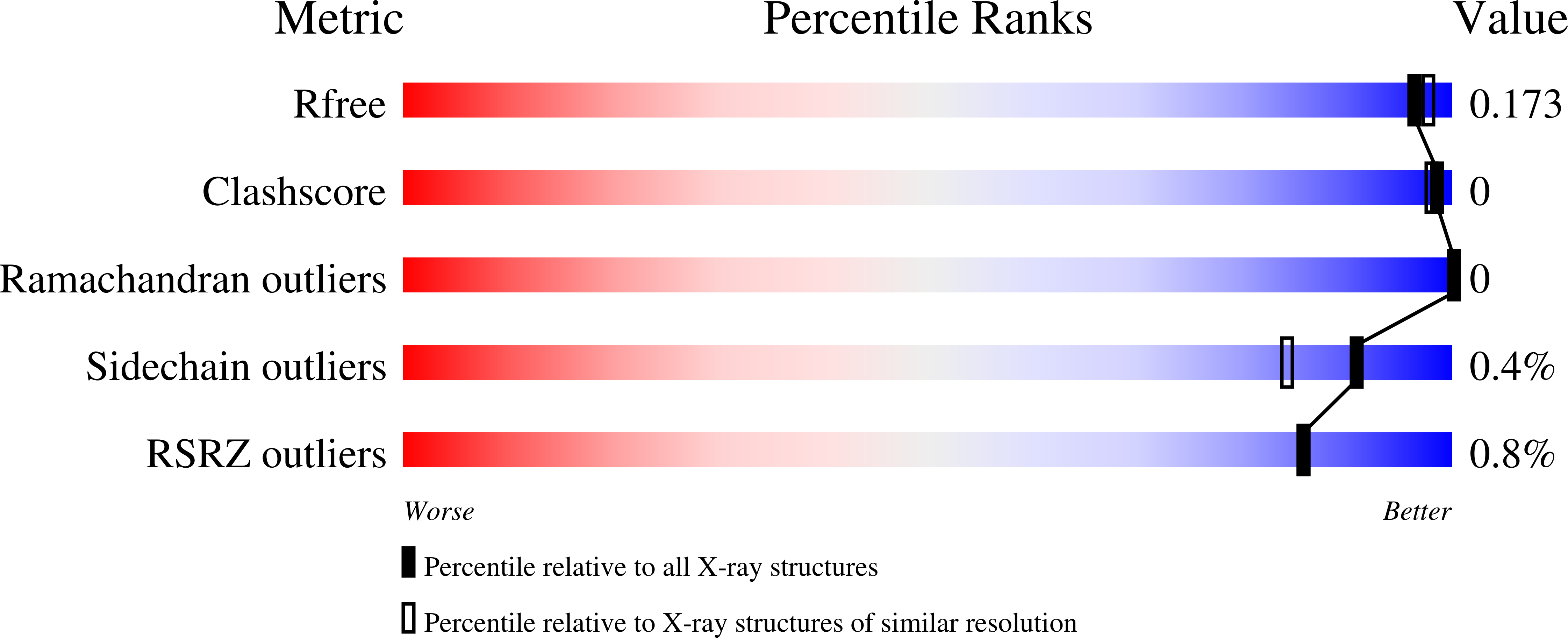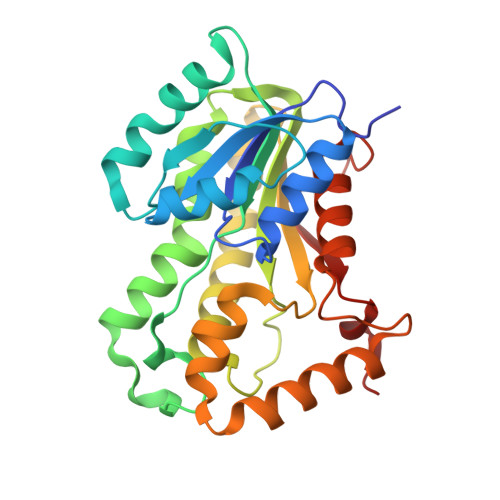Discovery of new diaryl ether inhibitors against Mycobacterium tuberculosis targeting the minor portal of InhA.
Chebaiki, M., Delfourne, E., Tamhaev, R., Danoun, S., Rodriguez, F., Hoffmann, P., Grosjean, E., Goncalves, F., Azema-Despeyroux, J., Pal, A., Kordulakova, J., Preuilh, N., Britton, S., Constant, P., Marrakchi, H., Maveyraud, L., Mourey, L., Lherbet, C.(2023) Eur J Med Chem 259: 115646-115646
- PubMed: 37482022
- DOI: https://doi.org/10.1016/j.ejmech.2023.115646
- Primary Citation of Related Structures:
8OTM, 8OTN - PubMed Abstract:
Tuberculosis (TB) caused by Mycobacterium tuberculosis (Mtb) affects 10 million people each year and the emergence of resistant TB augurs for a growing incidence. In the last 60 years, only three new drugs were approved for TB treatment, for which resistances are already emerging. Therefore, there is a crucial need for new chemotherapeutic agents capable of eradicating TB. Enzymes belonging to the type II fatty acid synthase system (FAS-II) are involved in the biosynthesis of mycolic acids, cell envelope components essential for mycobacterial survival. Among them, InhA is the primary target of isoniazid (INH), one of the most effective compounds to treat TB. INH acts as a prodrug requiring activation by the catalase-peroxidase KatG, whose mutations are the major cause for INH resistance. Herein, a new series of direct InhA inhibitors were designed based on a molecular hybridization approach. They exhibit potent inhibitory activities of InhA and, for some of them, good antitubercular activities. Moreover, they display a low toxicity on human cells. A study of the mechanism of action of the most effective molecules shows that they inhibit the biosynthesis of mycolic acids. The X-ray structures of two InhA/NAD + /inhibitor complexes have been obtained showing a binding mode of a part of the molecule in the minor portal, rarely seen in the InhA structures reported so far.
Organizational Affiliation:
Synth¨¨se et Physico-Chimie de Mol¨¦cules d'Int¨¦r¨ºt Biologique (LSPCMIB), UMR 5068, CNRS, Universit¨¦ Toulouse III - Paul Sabatier (UT3), Toulouse, France; Institut de Pharmacologie et de Biologie Structurale (IPBS), Universit¨¦ de Toulouse, CNRS, Universit¨¦ Toulouse III - Paul Sabatier (UT3), Toulouse, France.





















